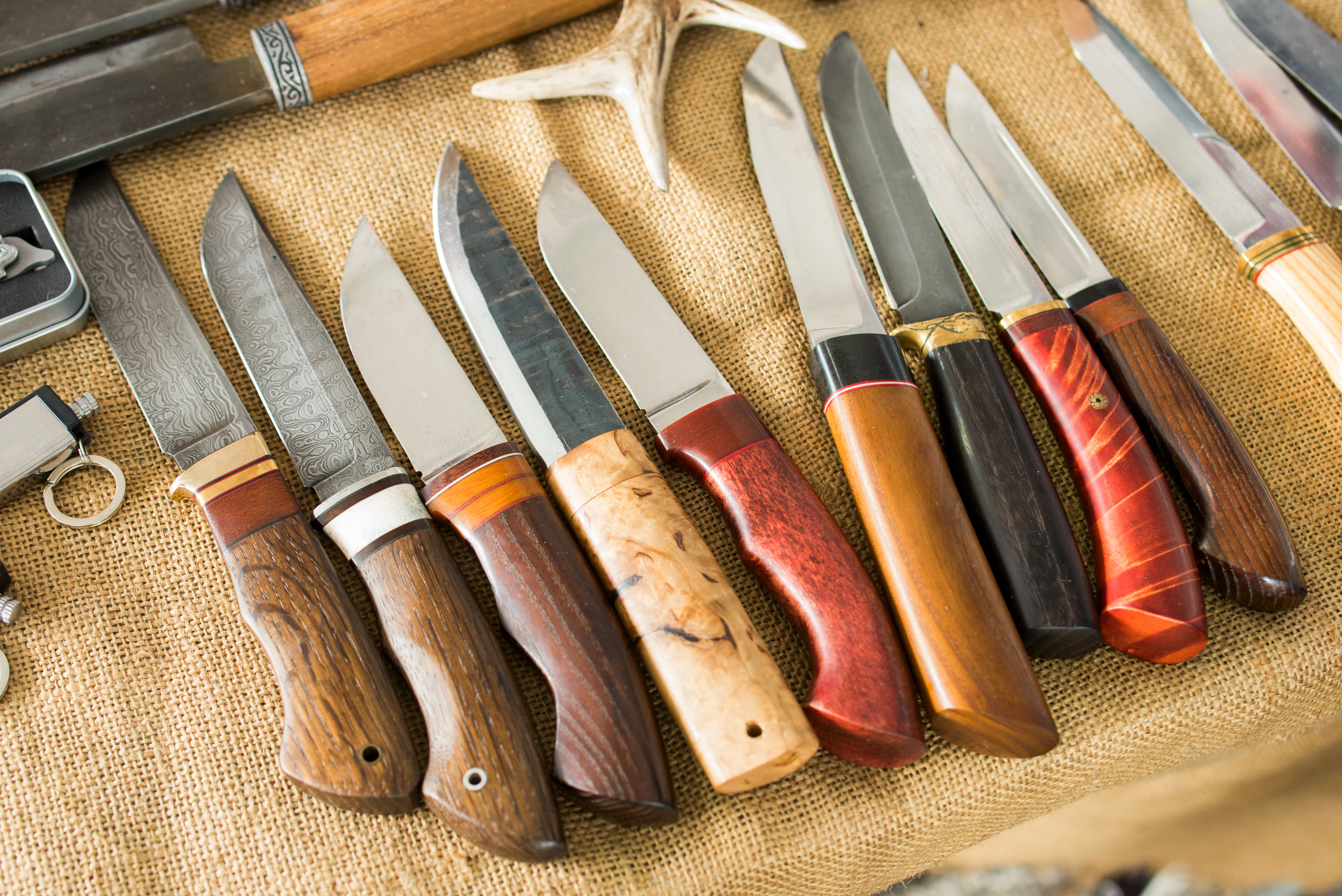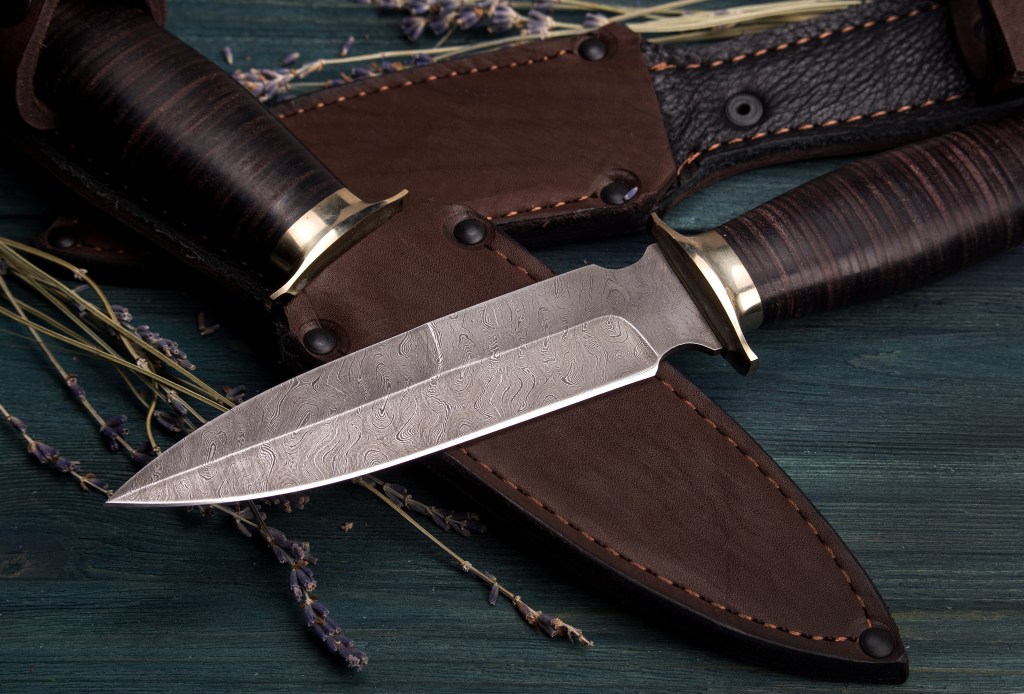
Vintage Hunting Knives

Vintage Hunting Knives
Introduction to Vintage Hunting Knives
The allure of collecting vintage knives extends beyond mere functionality; it encompasses a deep appreciation for craftsmanship, history, and the stories embedded within each piece. For many collectors, these historical knives offer a glimpse into the past, illuminating the evolution of hunting practices and knife-making techniques over the decades.
The practicality of collecting such pieces lies in their potential investment value and in preserving craftsmanship and historical significance. Historical knives carry a story of their era, maker, and users, making them a cherished item for those passionate about knife history and the rich tapestry of the hunting tradition.

Iconic Vintage Hunting Knives Every Collector Should Know
Several vintage knives have etched their mark in outdoor adventure and craftsmanship. Among these, iconic models stand out for their design and functionality and storied pasts, making them highly sought after by collectors.
These knives embody the spirit of the wilderness and the skill of their makers, serving not merely as tools but as pieces of art and history. From the rugged simplicity of the Bowie knife, with its roots deeply embedded in the American frontier, to the elegant functionality of the Finnish Puukko, known for its minimalist design and exceptional versatility, these vintage models are a testament to the enduring relationship between humans and the natural world.
Iconic knives
Buck Model 110 Folding Hunter
The Buck Model 110 Folding Hunter, produced in 1964, remains one of the most recognizable pocketknife designs today. The Buck 110 knife was originally intended for butchering and skinning game, but it has become a favorite among casual knife users. Its clip point is highly versatile, and despite the large blade length, users find it easy to handle. The knife’s brass bolsters and woodgrain handle add to its appeal.
KA-BAR USMC Utility
The KA-BAR knife gained its reputation from being issued to troops during WWII, with millions of men relying on it. The USMC Utility knife, with its recognizable design and 7-inch blade length, was created for multipurpose use. Even after 70 years, it remains a top choice for military personnel and civilians alike, making it a must-have addition to any collection.
Opinel #7
The Opinel knife is an unmistakable international icon. Its simple design has earned it numerous prestigious awards, and it is hugely popular worldwide. This French knife is also famous for its patented locking ring, which is completely unique to the Opinel and surprisingly affordable. The knife has a long history as well, dating back to Joseph Opinel’s creation of a working man’s knife in the 1890s that quickly won over locals. Even today, the famous camp knife is made of authentic alpine wood and comes in various sizes, including one with a 3.5-inch blade.
Vintage models
Collectors also covet the French Navy Dagger, created by Jean-Pierre Charonnet in 1870. The original Schrade Old Timer is another popular choice, featuring a rosewood handle made from high-quality steel. Fans of vintage knives also appreciate the W R Case & Sons, which is recognizable for its “Tested” shield logo.
Caring for Your Vintage Hunting Knives
To maintain and preserve the quality and value of vintage blades, paying close attention to detail and regularly caring for them is important.
Maintenance tips
Here are some tips to keep your knives in top condition:
- Apply a light coat of oil to the blade to prevent rust and protect the knife’s integrity
- Clean the blade after every use, removing any debris and moisture that can cause rust
- Clean your knives after each use with a gentle brush and mild detergent. Any residue can cause stains and rust.
Knife storage
When it comes to the care and maintenance of your vintage knives, it is important to pay attention to both immediate needs and long-term upkeep. To keep the blade’s edge in top condition, it is essential to use sharpening tools and stones regularly. For storage, keep your knives in a dry place with a temperature ranging from 62°F to 70°F, and avoid damp or humid environments.
You can display your knives using a magnetic strip, a wall mount, or a glass case. If you choose to use a glass case, make sure to line it with felt to protect the blade and lay the knives horizontally.
Equally important is the investment in personal protective equipment, such as cut-resistant gloves, which safeguard against accidental injuries while handling sharp blades. Additionally, reading reference books and magazines or exploring various apps on your phone can expand your knowledge of knife maintenance, design, and history.

The Value of a Vintage Knife: Appraisal and Insurance
When considering the appraisal of vintage knives, it’s crucial to delve into several key aspects to ascertain their value accurately. Firstly, the historical significance of the knife plays a pivotal role; knives with a storied past or those associated with significant historical events tend to hold greater value. Secondly, the condition of the knife is paramount, with well-preserved pieces fetching higher prices. This includes assessing any signs of damage, the sharpness of the blade, and the state of the handle. The rarity of the knife also significantly impacts its value; limited edition pieces or those from renowned manufacturers are highly sought after. Moreover, the materials used and the intricacy of the design, adds to a knife’s allure and worth.
Knife appraisal
When appraising vintage knives, it’s crucial to consider several factors that contribute to their value. The knife’s age, rarity, condition, and historical significance play pivotal roles in determining its worth. Collectors should also pay attention to the manufacturer’s marks, as these can significantly influence the knife’s appraisal value.
Collector’s insurance
Given the potential high value and sentimental importance of these collectibles, securing appropriate insurance is essential. Collector’s insurance is specifically designed to protect the investment made in these unique items, offering peace of mind that their value is safeguarded against loss, theft, or damage. It’s advisable for collectors to regularly review their collection’s value and update their insurance coverage accordingly, ensuring their prized possessions are fully protected.

How to Start a Vintage Knife Collection
Starting a collection of vintage knives can be a rewarding hobby, blending historical appreciation with craftsmanship. To embark on this journey, it’s crucial to grasp the basics of knife anatomy, including the blade, handle, bolster guard, and tang, as this knowledge will significantly aid in assessing a knife’s quality.
Starting a collection
It is essential to become familiar with the different shapes and uses of knives, such as the clip-pointed knife that is excellent for detailed work, and to comprehend the differences in steel types, such as the durability of highly coated blades. Knives are available in different steel types, and it is crucial to understand the function and maintenance of each. Stainless steel knives are ideal for areas with high humidity as they do not rust easily, while high-carbon knives may require additional maintenance since they tend to be more susceptible to rusting. Whether you are a collector of fixed blade knives or folder knives, it is important to understand the variances and purposes of each type of knife.
Focusing on a specific category, the maker, style, material, or historical period, can help streamline collecting. Vintage and custom knives often hold a special allure among collectors. Setting a realistic budget is important, as it dictates the scope of one’s collection. Knife enthusiasts understand the importance of diversifying their collection to cater to various needs and preferences. Adding Everyday Carry (EDC) knives, such as those from Spyderco, Benchmade, and Zero Tolerance, ensures that you’re always prepared for daily tasks with a reliable tool. For those interested in more rugged applications, tactical and military knives provide the durability and functionality required for combat and survival situations, making them essential for serious collectors. Each type of knife serves a unique purpose, enriching your collection and enhancing your preparedness for any situation.

FAQ Section
What makes a hunting knife ‘vintage’?
A knife typically becomes ‘vintage’ based on age, rarity, and historical significance.
How should I store my vintage knives to prevent damage?
Store in a cool, dry place and consider using oil for the blades to prevent rusting.
Are there specific insurance policies for knife collections?
Yes, specialty insurances exist for collectibles, including vintage knives, which can be appraised for their historical and monetary value.
Sources
https://louismartincustomknives.com/hunting-knives-blades-outdoor-history/
https://www.atlantacutlery.com/buying-hunting-knives-the-basics
https://knife-depot.com/pages/20-iconic-knives-every-knife-enthusiast-should-own
https://theprepared.com/blog/corrosion-knife-trick/
https://eknives.com/blog/vintage-knives-more-than-just-collectibles/
https://artisancutlery.net/blogs/knife-knowledge/beginners-guide-starting-knife-collection
About Collectibles Insurance Services
Collectibles Insurance Services has been protecting collections since 1966 and all coverage is provided by a carrier with a group rating of “A” (Excellent) by AM Best, the leading rating agency for the insurance industry.
Comprehensive coverage includes, but is not limited to: accidental breakage, burglary, fire, flood, loss in the mail, theft, natural disasters, and other causes of loss unless specifically excluded from the policy. Deductibles start at $0 for collector policies and we provide coverage for the market value of your collection for losses in excess of $50.
Additionally the protection extends At home and away, and we don't require collection itemization and serial number nor extensive paperwork and red tape.
